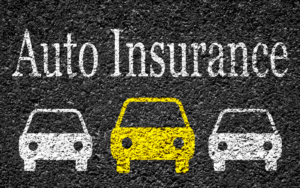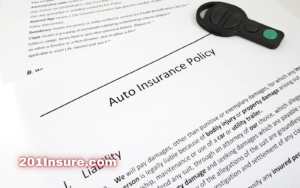What is Auto Insurance?

Many people think Auto Insurance is all the same and just another expense. Therefore, the only goal is to spend as little as possible. In this guide, we will break down some of the mandatory coverages you will need with Auto Insurance.
Mandatory Coverages
Bodily Injury Liability
This covers injuries that you cause to someone else. It covers you and listed Family members on your policy. Each state has it’s own requirements for minimum coverage, but you can increase this coverage. Minimum coverage is not advisable, as it typically will not cover the full amount of a claim and may leave you personally responsible to pay the remainder of a claim out-of-pocket. More on this later…(NJ Min Coverage Legislation)
Property Damage Liability
This coverage pays for damages you cause to someone else’s property, including their vehicles, homes, and other objects or structures. The minimum coverage requirement varies from state to state and is often too low to cover anything more than a minor fender-bender.
How to read your Liability coverage
 It varies from carrier to carrier, but all policies have what’s called a “Dec Page. This is short for Declaration Page and it declares what coverages are included in your policy and the limits of coverage. For Liability, you will see numbers listed as follows 25/50/5. The first number refers to the amount of Bodily Injury Coverage per person. The second number is the total amount of Bodily Injury coverage per accident. The final number is the amount of Property Damage Liability the policy covers. So, in this example your coverage provides $25,000 per person, $50,000 per accident, and $5,000 in property damage.
It varies from carrier to carrier, but all policies have what’s called a “Dec Page. This is short for Declaration Page and it declares what coverages are included in your policy and the limits of coverage. For Liability, you will see numbers listed as follows 25/50/5. The first number refers to the amount of Bodily Injury Coverage per person. The second number is the total amount of Bodily Injury coverage per accident. The final number is the amount of Property Damage Liability the policy covers. So, in this example your coverage provides $25,000 per person, $50,000 per accident, and $5,000 in property damage.
Uninsured/Underinsured Motorist Coverage
This coverage part also varies from state to state, but is required in New Jersey. As we had mentioned earlier, when a person has low limits they could be required to pay claims in excess of their limits out-of-pocket. Well, imagine being on the other end of this scenario. This helps the policy holder avoid the need to hire an attorney and file a lawsuit against the driver with inadequate limits. For example, let’s say you are in an accident with another driver and end up with $75,000 of hospital bills. If the other driver only has $30,000 of coverage, but you carry $50,000 in Uninsured/Underinsured Motorist Coverage, you are covered.


